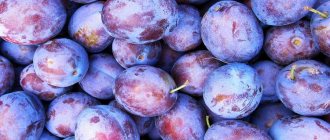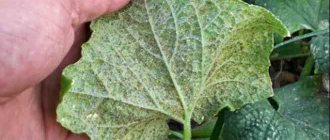History of selection
The Gribovsky variety of garlic includes several varieties that are similar in morphological characteristics and differ in ripening time, taste and keeping quality:
- Gribovsky Yubileiny;
- Gribovsky 60;
- Gribovsky 80.
The Gribovsky Yubileiny variety was bred by Soviet breeders from the All-Russian Research Institute for Selection and Seed Production of Vegetable Crops in the early 70s of the last century. Included in the State Register of the Russian Federation in 1976, the originator is the Federal Scientific Center for Vegetable Growing. When breeding Gribovsky garlic, scientists focused on versatility of use, frost resistance and high immunity. The variety is recommended for cultivation throughout Russia.
Comment! The variety got its name in honor of the Gribovskaya garden plant breeding station, where it was bred.
Description of the variety, its characteristics, yield
This is a winter variety of garlic that produces large shoots - about 1 m in height. The wide and long leaves have a matte green color and are covered with a waxy coating of medium intensity. The heads are flat-rounded and have 8-10 teeth. The weight of root crops reaches 50 g or more. The juicy scales covering the teeth are cream-colored with purple veins, and the husk is also purple.
Gribovsky Yubileiny is a medium-ripening variety; this period ranges from 100 to 105 days. It has a fairly high yield: under good conditions, from 1 sq. m you can get up to 2 kg of bulbs.
Due to the high content of essential oils, this variety of garlic has a very pungent taste. The dry matter content in the pulp is also quite high - at least 41%. All this makes it suitable for preparing various seasonings. However, it is also good for other purposes, in particular, for canning and directly for food.
Gribovsky Yubileiny was obtained from varieties closest to wild garlic. Thanks to this, it is characterized by very high resistance to infectious diseases and pests. Its other advantages are good winter hardiness, the ability to maintain freshness for a long time and tolerate transportation well. Unlike many other varieties, Gribovsky Yubileiny is able to very quickly adapt to changing growing conditions, which has ensured its fairly wide distribution. All these advantages of the plant were confirmed during experiments.
Characteristics and description
The Gribovsky garlic variety includes the following varieties: Gribovsky 60, Gribovsky 80, Gribovsky Yubileiny. Depending on the type of vegetable and the climate of the region, the growing season of the crop lasts 80–125 days.
Plants of all subspecies in the middle of the growing season produce arrows, the length of which often reaches 1–1.5 m. At the top of the arrows, umbrellas are formed, in which seeds are formed. The length of the leaf blades is 15–20 cm, width is 2.5 cm. The aerial part consists of 10–12 leaves.
The variety has high immunity to a number of diseases of fungal and viral origin. Gribovsky is tolerant of sudden temperature changes and unfavorable weather conditions: it tolerates both drought and cold well.
Description of the head of garlic Gribovsky:
- Weight - 30–60 g, in rare cases the bulbs weigh 100 g.
- The head consists of 5–12 single-caliber teeth.
- The shape is flat-round with a slightly elongated tip.
- The surface of the cloves is yellow with lilac or violet veins.
- The taste is good: the taste is sharp, the smell is rich.
As you can see, the characteristics of winter garlic allow us to hope for a generous harvest in regions with changeable weather. But in order for a crop to show 100% of the potential inherent in nature, it is necessary to plant correctly and provide proper care.
Methods and scheme
Planting cloves
It is considered the most traditional option.
- The rows are spaced 25-30 cm apart.
- The recesses are located 10-15 cm from each other
- The cloves are placed 4 cm deep, and with increased soil density - 5-6 cm.
Scheme for planting garlic cloves
Planting bulbs
The method is used if the size of the cloves becomes smaller, it is necessary to improve the quality of the crop. It takes place in 3 stages:
- The largest heads are planted, after the appearance of arrows with bulbs, the largest are selected.
- A year later, the seeds of the previous crop are planted, obtaining heads with one tooth without arrows.
- The resulting single-tooth heads are seated, resulting in full-fledged arrow-forming heads.
Scheme
- Between rows 20 cm;
- Large bulbs are located at a distance of 15 cm, smaller ones - 10 cm;
- Planting material is introduced at a depth of 5 cm.
To retain moisture and protect against weeds, it is necessary to cover the row spacing with a layer of chopped hay.
Scheme for planting garlic bulbs
Planting garlic Gribovsky
Planting garlic Gribovsky
Gribovsky winter garlic is usually grown with single-clove bulbs. Only well-drained, moist soil is allocated for this crop. The location is sunny. Garlic grows well after cabbage, cucumbers and legumes. It can also be planted between strawberry rows.
Planting is carried out in late autumn, just before the autumn frosts. Before planting, the head is divided into cloves. The earth is loosened and leveled in advance. Plant the cloves in furrows 2-3 cm deep. There should be at least 10 cm of free space between plants. Leave 15-20 cm of free space between the rows. During planting, it is worth making sure that the upper part of the tooth, where the shoot pecks, looks up and not down.
Important! The garlic cloves just need to be carefully placed in the furrows. If you force them into the ground, the growth of the root system will slow down.
After planting, when the furrows with teeth are already covered with earth, the rows are mulched so that the earth is saturated with oxygen and useful substances, and the moisture is less eroded. You can mulch the rows of garlic themselves, but only if the winters in the region are snowless, otherwise there will be a risk of earlier pipping, and this threatens the plantings with freezing. Until the first shoots appear in the spring, the plantings are not touched at all.
Planting and care
Garlic variety Gribovsky is planted in the fall about a month before the onset of frost. In central Russia and in particular in the Moscow region, this is the end of September - the first days of October. Depending on the growing region, planting times may vary. Planting too early can lead to untimely germination of cloves; late planting threatens poor rooting and freezing.
The area for planting garlic should be in a well-lit, sunny place. It is not recommended to plant the crop in lowlands, where melt water accumulates in the spring; close groundwater is also unacceptable. The variety will show its full potential on loose nutrient soils (sandy loam, loam); growing in heavy clay soil will not bring a rich harvest.
Rotted manure or compost is spread on the garlic beds at the rate of 5 kg per 1 m². The soil is carefully and deeply dug up and left to settle for 2 weeks.
For planting, choose smooth, healthy cloves of medium or large size. To prevent fungal diseases, planting material is soaked in a solution of fungicide or potassium permanganate. The cloves are placed in the furrows with the sharp tip facing up without pressing into the soil, as this can slow down root growth. Planting depth - 2-5 cm, distance between rows - 30 cm, between bulbs - 10 cm. You can put a layer of mulch (hay, straw) between the rows - this will prevent rapid evaporation of moisture and drying out of the top layer of soil, and will also inhibit the growth of weeds .
Warning! There is no need to plant garlic where onions or potatoes used to grow, since these crops are affected by the same diseases.
Legumes, cucumbers, and cabbage are considered the best predecessors of garlic.
Further care for Gribovsky garlic comes down to watering, fertilizing, loosening the soil and weeding. In dry weather without precipitation, garlic should be watered once a week. After watering, the soil is loosened and weeded.
The yield of the Gribovsky variety will increase if in the spring you feed the plantings with chicken manure and fertilizers with a high content of nitrogen and phosphorus. The first time the beds are fertilized is after the snow melts, then in early and mid-April.
In June, the shoots of garlic of the Gribovsky variety must be removed when they reach a length of 10-15 cm. If this is not done, the plant’s energy will be spent on flowering and not on bulb formation. Only a few arrows are left for sowing next year.
Comment! By the appearance of the arrows, you can determine the degree of ripening of the garlic.
3 weeks before the planned harvest date, stop watering and feeding the garlic. During this time, the heads will acquire a rich taste and aroma and will not be watery. Garlic is pulled out in dry weather, dried in a shaded, well-ventilated place, cleaned and sorted. It is optimal to store garlic in a dark, cool, dry place.
Cultivation care
We recommend reading our other articles
- Pavlovsk lemon - growing features and care
- The best raspberry varieties for central Russia
- Clematis Multi Blue
- Winter chicken coop
When the stems and leaves begin to turn yellow, you can begin to harvest
As with any other garden crop, Gribovsky garlic requires careful care throughout its growth.
- Watering is carried out approximately once a week. But this indicator may vary depending on the weather, soil type, and also the condition of the beds. It is known that the more weeds there are, the more often you need to water! About 3 weeks before harvesting the garlic, watering is stopped completely.
- It is also necessary to loosen the soil once a week. This is done so that the head can develop correctly. The procedure is carried out a day after watering, when all the water is well absorbed into the ground. During this procedure, it is advisable to get rid of weeds. They are uprooted and burned.
- Fertilizing Gribovsky garlic is recommended primarily in early spring, so that the crop grows quickly and develops feathers. Nitrogen minerals are used for this. At the end of spring and summer, fertilizing is carried out only when necessary. Phosphorus and nitrogen minerals, as well as chicken manure, are considered good for the crop.
- Around June, when the arrow has already grown by 10-15 cm, it is necessary to cut it off. In this case, the plant will direct its forces to the development of the head, and not the arrows with bulbs. To obtain planting material, several arrows are usually left.
If the care was correct, the gardener will receive a rich harvest with large heads of garlic. It will have a good, rich taste, a pleasant aroma and can be stored for several months.
Harvest and storage
You can store garlic in different ways
When the stems and leaves of the crop begin to turn yellow and then die, you can begin to harvest Gribovsky garlic. The heads are dug out carefully, using a pitchfork, and left to lie in the sun to dry and ripen.
Important!
You can harvest garlic only in sunny weather, when the ground is not wet. If the heads are dug up after or during rain, they will not store well.
Before storing garlic, the tops are cut off, dried thoroughly for several days to weeks, and sorted. It is important to sort the heads by size and quality. The largest, smallest and damaged ones go to food first, and those that are whole, medium in size, can be put away, they last the longest. Garlic can be stored in different ways. Most often, they are folded into nets and hung in a cool, dark place where there is no dampness or drafts.
Diseases and pests
In very rare cases, if the rules of agricultural technology are not followed, the variety can be affected by diseases such as:
- fusarium;
- bacteriosis;
- cervical rot;
- white rot;
- green mold;
- downy mildew;
- rust.
To avoid possible problems associated with these diseases, you need to choose healthy planting material, remove weeds and loosen the soil in a timely manner, and do not overuse frequent watering.
Garlic variety Gribovsky can be attacked by onion moth and garlic nematode. In order to prevent these pests, it is necessary to adhere to the rules of crop rotation, burn the tops after harvesting, and carefully dig up the soil in spring and autumn.
Advice! If you find longitudinal yellow stripes on the leaves of garlic, yellowing of the leaves and drying out of the tips, you need to urgently treat the plants against onion moths with the preparation “Iskra”, “Dachnik” or “Metaphos”.
Winter garlic variety “Dubkovsky”
Year of inclusion in the State Register: 1987
Recommended for cultivation in all regions of the Russian Federation, primarily in garden plots, homesteads and small farms.
Characteristics:
- Universal variety.
- Winter, mid-season, bolting.
- The taste is spicy.
- Average bulb weight: 29-32 g.
- Number of cloves: 10-12.
- Can be damaged by nematodes, white rot
- Suitable for mechanized cleaning.
- Capable of propagation by aerial bulbs.
Growing season:
- 98-114 days (from emergence to yellowing of leaves).
Appearance:
- The leaves are bright green, the waxy coating is weak.
- The aerial bulbs are small and pale purple.
- The bulbs are round-flat with an upward slope.
- The color of dry scales is creamy-violet, while that of juicy scales is creamy.
- The bulbs are dense.











